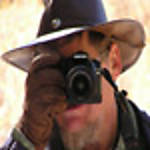1⁄35From 'Backyard Toy' to Soviet T34-85
8
Comments

Front view showing cast effect. All welding marks from Milliput Super White, cocktails sticks, water and patience.
Comments
Wow! What a truly phenomenal build, and article to boot.
Way to go Pete. It is really a one-of -a-kind! What more can I say?!
I can't wait to see that Hetzer.
FEB 16, 2004 - 12:44 PM
All I can say is WOW Kicks the butt out of my 1/16th King tiger!
What kit was this?
FEB 16, 2004 - 01:03 PM
Wow! That looks great! Now I'm really jealous... I wish someone manufactured and sold those.
FEB 16, 2004 - 01:10 PM
One of the Best jobs I have seen in a long Time!
Great Build Great fellow Human!
Nice Work Peter!!
FEB 16, 2004 - 11:03 PM
Thank you all for your most generous and kind comments.
The tank now lives in Lulea, Sweden. About 100 miles south of the Arctic Circle. The new owner is my good friend Kent Wiik who aims to see if it runs as well in the snow as the 1:1 version did! He's in the right place for it, that's for sure!
The Hetzer build has started but in between finishing the 1:8 T34-85 and starting the Hetzer I have built a 1:6 T34-85 to the same standard.
A lot more detail and functions than the 1:8 through being 33% larger. I think this one could end up abroad as well for the right price!
I was going to submit it as an article to Jim but I think Jim needs a break from my big tanks for a while! Tell me to the contrary JIm!
Thank you all again.
Peter (Trackpins)
FEB 17, 2004 - 09:27 AM
Hi all,
Kent Wiik here - proud and happy owner of this truly amazing T34-85.
Peter deserve every ovations for this fantastic model.
The photos simply don´t do it justice, far more realistic seen live with all those details.
Made fully R/C with smoke and sound and still not to fragile to be driven outside. Bare in mind it is made in high museum quality.
And yes, he works excellent in snow - something we have a lot of here.
Thanks again Peter,
Kent
FEB 18, 2004 - 05:58 AM
wicked nice i wish i ahd a 1:8 scale tank (ohh the posiblities) you are a lucky person
MAR 24, 2004 - 11:29 AM
Copyright ©2021 by Peter Mealing. Images and/or videos also by copyright holder unless otherwise noted. The views and opinions expressed herein are solely the views and opinions of the authors and/or contributors to this Web site and do not necessarily represent the views and/or opinions of Armorama, KitMaker Network, or Silver Star Enterrpises. All rights reserved. Originally published on: 2004-02-16 00:00:00. Unique Reads: 14365

















